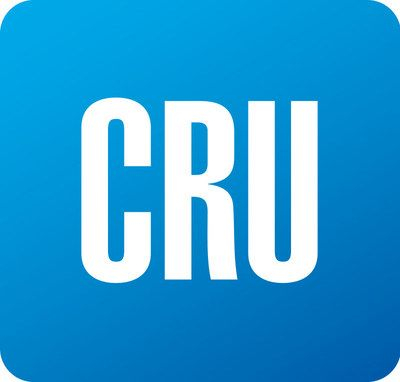CRU

January 15, 2021
CRU: Low-Carbon Aluminum is Gaining Momentum
Written by Greg Wittbecker
By Greg Wittbecker, Advisor, CRU Analysis
The primary aluminum industry has operated with the same technology since the large-scale production process was developed in 1886. It is a carbon-based electrolytic process. This process generates a lot of CO2. Global aluminum producers have been focused on reducing GHG for some time, but efforts have accelerated in the past five years. Environmental, Social and Governance (ESG) is no longer a nice acronym but a call to action for virtually all publicly-traded companies. Privately-held companies are also heeding the call as they realize that access to growth capital will also be driven by how well they meet investor expectations.
The Paris Agreement adopted by 196 parties in December 2015 formalized the call to action to cope with the effect of carbon on climate change.
Concurrently, the growing number of Emission Trading Systems (ETS’s) accentuated the potential cost of CO2. According to the International Carbon Action Partnership (ICAP), ETS’s now comprise:
• 12.5% of the world’s population
• 37% of global GDP
• 8% of global emissions.
The most noteworthy ETS is that operating in the EU, which has existed since 2005. EU carbon allowances are trading above 34 euros per ton. (Source: ICE Futures Europe 22 January.) An important new era is emerging on this ETS. Phase 4 (2021-2030) aims to sharply reduce GHG by 40% from 1990 levels and is likely to impose carbon border adjustment mechanisms (CBAM) in 2021.
The Focus on Carbon is Driving Operational and Commercial Change
Producers are responding to the carbon challenge by developing operational improvements:
• Chinese producers in Shandong Province have moved aluminum capacity to hydro-rich Yunnan Province aiming to reach 6 million tons of production within 1-2 years
• UAE-based Emirates Global Aluminum plans a first-stage deployment of solar power capable of supporting 40,000 tons of production with potential to expand ten-fold by 2030
• Norwegian producers Alcoa and Hydro are adding wind power to their renewable energy portfolio to complement their hydro power.
The biggest technological initiative is the Rio Tinto/Alcoa/Apple/Canadian government joint venture called Elysis. This venture aims to commercialize inert anode technology that would produce primary aluminum with zero carbon. The partners advertise that the process will have 15% lower operating costs than existing carbon-based technology and would actually generate oxygen in its process. 2024 is the target for industrial-scale production. UC Rusal is testing its own inert anode technology and says it may be ready by 2023. China has been silent on its development plans but given the rapid evolution of Chinese aluminum technology, it is reasonable to assume the Chinese are well advanced in their own version of inert anode.
Commercially, multiple primary aluminum producers (Alcoa, CBA, Hydro, Rio Tinto, UC Rusal) are marketing low carbon primary aluminum.These offerings have a common guarantee of no more than 4 metric tons of CO2 per ton of production.
Each of these producers is now reporting reasonable commercial transactions for 2021. The burning question is, “How much of a premium are they being paid versus conventional high(er) carbon production?”
The short answer is that the premiums are modest, perhaps $20-25 per metric ton or about 6% of current North American ingot premiums expressed versus the London Metal Exchange. In Europe, the premium is likely to rise faster due to the progressively tougher carbon standards that will be reflected in carbon allowance pricing.
The important development now is that buyers are beginning to stipulate low carbon specifications as a condition of quoting some part of their requirements.
This is most likely to occur within those markets that are most consumer-facing such as automotive and packaging. Construction and other less consumer-driven markets will likely take their lead from government policy and regulation.
Greg Wittbecker joined CRU in January 2018 after retiring from Alcoa, where he was Vice President of Industry Analysis and Managing Director of Alcoa Beijing Trading, based in Shanghai, China. His career spans 35 years in the aluminum industry, having also held senior commercial and management roles at Cargill, Wise Metals and Koch Supply and Trading. Greg brings perspective on the entire aluminum supply chain from bauxite to aluminum finished products and will be a regular contributor to SMU going forward. He can be reached at gregory.wittbecker@crugroup.com


